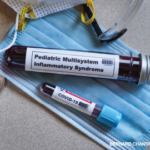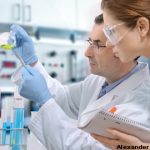NEW YORK (Reuters Health)—Two new reports in JAMA strengthen the link between SARS-CoV-2 infection and pediatric inflammatory multisystem syndrome (PIMS).
Pediatricians from several communities have reported children who developed fever and multisystem inflammation during the COVID-19 pandemic. Some children were critically ill and some had characteristics similar to Kawasaki disease or Kawasaki disease shock syndrome.
Dr. Michael Levin from Imperial College, London, and colleagues describe the clinical and laboratory characteristics of 58 children admitted to eight hospitals in England who satisfied published criteria for PIMS temporally associated with SARS-CoV-2 infection (PIMS-TS).1
The median age of these children was 9 years, 57% were girls and 69% were of black or Asian race. Only seven had comorbidities: three with asthma and one each with neurodisability, epilepsy, sickle cell trait and alopecia.
All children had persistent fever for three to 19 days, and some had abdominal pain (53%), erythematous rash (52%), conjunctival injection (45%), headache (26%) and sore throat (10%).
Half of the patients required admission to the pediatric critical-care unit, 47% had shock requiring inotropic support and 43% received mechanical ventilation for respiratory support.
Overall, 45 patients (78%) had evidence of current or prior SARS-CoV-2 infection.
All children had evidence of a marked inflammatory state, with significant elevations in C-reactive protein, ferritin, troponin and N-terminal pro-B-type natriuretic peptide (NT-proBNP), along with neutrophilia.
The authors identified three provisional clinical patterns: 23 children had persistent fever and elevated inflammatory markers, but no features of organ failure or mucocutaneous features suggestive of Kawasaki disease or toxic shock syndrome; 29 children developed shock, with evidence of left ventricular dysfunction or with elevation of cardiac enzymes; and seven fulfilled the American Heart Association diagnostic criteria for Kawasaki disease (13 children met the criteria when coronary artery aneurysms were included).
One child died from PIMS-TS.
Patients with PIMS-TS tended to be older than reported cases of Kawasaki disease or Kawasaki disease shock syndrome or toxic shock syndrome and had higher white blood cell count, neutrophil count, and C-reactive protein, as well as more profound lymphopenia and anemia, compared with Kawasaki disease or Kawasaki disease shock syndrome patients.
“This suggests that PIMS-TS differs from these other pediatric inflammatory entities,” the authors note. “As these cases have emerged in temporal association with the pandemic, a link with SARS-CoV-2 is likely.”
Stanford T. Shulman, MD, of Lurie Children’s Hospital of Chicago, Northwestern University Feinberg School of Medicine, who recently reviewed early reports of PIMS in association with COVID-19, told Reuters Health by email, “Categorizing patients has been a problem, including in this paper in which three distinct groups of patients are described.”
“My main message is that this is quite complicated and clearly not all of these patients have the same condition,” he says. “Definitions of disease entities need to be more precise.”
In the second report, Eva W. Cheung, MD, of Columbia University Irving Medical Center, New York, describe 17 previously healthy patients (median age: 8 years; range: 1.8–16 years) who presented with a clinical syndrome characterized by prolonged fever, systemic inflammation, shock, end-organ dysfunction or symptoms reminiscent of KD or toxic shock syndrome and who also had evidence of recent SARS-CoV-2 infection.2
Inflammatory markers were elevated in all patients, and most had lymphopenia, bandemia, elevated troponin T and elevated NT-proBNP. All but one patient had elevated serum interleukin 6.
Fifteen patients required admission to the pediatric intensive-care unit and 10 required vasoactive support, but none of the nine patients with hypoxia required mechanical ventilation.
Eight children met criteria for Kawasaki disease and five met criteria for incomplete KD, but all children had normal coronary arteries by measurement. One child had a medium-sized aneurysm of the left anterior descending coronary artery.
Echocardiograms revealed moderate or more ventricular dysfunction in six patients, and electrocardiograms showed nonspecific ST/T-wave abnormalities in 10 patients, attenuated QRS voltage in one patient and dysrhythmias in three patients.
By May 20, all patients had been discharged home with no fatalities after a mean length of hospital stay of 7.1 days (range: 3–18 days).
Dr. Cheung tells Reuters Health by email, “The most interesting finding of our study was the breakdown of the presenting characteristics and demographics of this syndrome. It really highlighted how different this syndrome is from acute COVID-19 infections, which in the previous months was primarily affecting children with comorbidities and presented with severe respiratory failure, while this multisystem inflammatory syndrome was affecting mostly healthy children with very different clinical features.”
“Children who present with this syndrome have primarily been treated in our institution with supportive therapies, anti-inflammatory medications such as methylprednisolone [especially in moderate and severe cases with shock] and intravenous immunoglobulin for the concern of the development of coronary artery aneurysms, which we rarely observed,” she says.
“We are encouraged that children are recovering and, even some of the sickest have been discharged home,” Dr. Cheung said. “On-going follow-up of these children is needed to understand any long-term effects of this syndrome. Research is actively happening to better understand this syndrome that will help us move forward with recognition and treatment and how this will impact our view of COVID-19 in children overall.”
Dr. Brian McCrindle of The Hospital for Sick Children, Toronto, who co-authored a linked editorial, tells Reuters Health by email, “The PIMS patients had a lot of similar features to the Kawasaki disease patients, but the pattern of different laboratory abnormalities and the higher prevalence and greater severity of cardiac complications are different from Kawasaki disease. These differences will be helpful to clinicians in be alert for PIMS when faced with a patient with Kawasaki disease-like features.”3
“These PIMS patients tend to respond to the same anti-inflammatory medications used to treat Kawasaki disease, together with supportive care, although they may require more medication and a longer course, and take longer to recover,” he says.
Dr. Levin did not respond to a request for comments.
References
- Whittaker E, Bamford A, Kenny J, et al. Clinical characteristics of 58 children with a pediatric inflammatory multisystem syndrome temporally associated with SARS-CoV-2. JAMA. 2020 Jun 8;e2010369. Online ahead of print.
- Cheung EW, Zachariah P, Gorelik M, et al. Multisystem inflammatory syndrome related to COVID-19 in previously healthy children and adolescents in New York City. JAMA. 2020 Jun 8;e2010374. Online ahead of print.
- McCrindle BW, Manlhiot C. SARS-CoV-2-related inflammatory multisystem syndrome in children: Different or shared etiology and pathophysiology as Kawasaki disease? JAMA. 2020 Jun 8. Online ahead of print.


